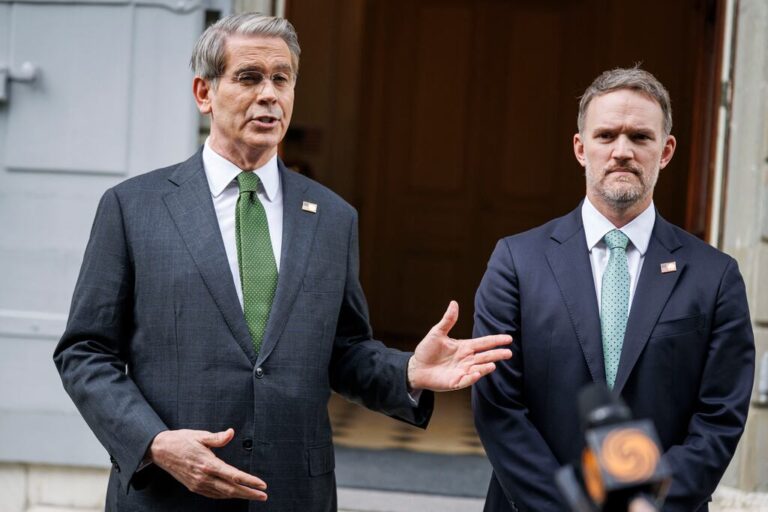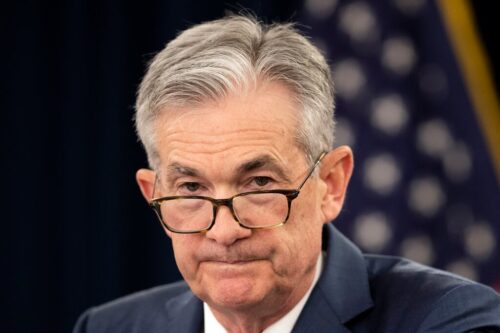This column is from Trendlines, my business newsletter that covers the forces shaping the economy in Boston and beyond.
Breaking up is hard to do.
Confronting the escalating risk of throwing their countries into a recession, the United States and China agreed over the weekend to a 90-day cease-fire in a long-simmering trade fight that boiled over last month.
The two sides will roll back most of the tariffs they imposed on each other in April — duties so steep they threatened a near-total split between the world’s two largest economies. While talks on a broader deal take place, US tariffs on Chinese products will fall to 30 percent from 145 percent. China will reduce its tax on US imports to 10 percent from 125 percent.
“The consensus from both delegations this weekend is neither side wants a decoupling,” said US Treasury Secretary Scott Bessent, who led the Americans in two days of negotiations with Chinese officials in Geneva.
The truce “serves the interests of both nations as well as the common interests of the world,” China’s Commerce Ministry said in a statement.
It was a rare moment when the fierce rivals acknowledged their mutual dependence on bilateral trade.
President Trump came into office vowing to revitalized US manufacturing and stop China and other countries from “ripping off” the United States. China alone rang up a cumulative trade surplus with America of $1.3 trillion over the past four years.
But US business leaders and investors complained loudly about the sky-high tariffs and the uncertainty they were causing. They warned that inflation would rise, supply chains would be disrupted, and the economy would stall. Chinese leaders, meanwhile, feared rising unemployment as its factories went idle.
“We concluded that we have a shared interest,” Bessent said. “We want more balanced trade. And I think that both sides are committed to achieving that.”
What that new balance will look like remains to be seen. But investors cheered the news that the Americans and Chinese were at least willing to keep talking.
“The baseline view heading into the weekend was some de-escalation of US/China tariffs and the agreement for more talks,” Wedbush Securities analyst Daniel Ives said in a note. “Instead, in a dream scenario this morning, Bessent/Chinese came out of these talks with massive cuts to reciprocal tariffs and is a huge win for the market and bulls.”
The Standard & Poor’s 500 index surged 3.3 percent. It is now up 17 percent from the low hit in the wake of President Trump’s April 2 “Liberation Day,” when he raised total tariffs on China to 145 percent from 10 percent in February.
The agreement marked the latest concession by Trump. He has already paused many duties on other countries in an effort to steady financial markets and calm fears of empty store shelves.
It takes 45 days for many goods to get from China to the United States, meaning disruptions now could linger for months.
The real motivator for the United States to strike a deal “was the prospect of missing backpacks, sneakers, and T-shirts at Walmart and Target just as parents start back-to-school shopping,” said L. Daniel Mullaney, a senior fellow at the Atlantic Council and a former assistant US trade representative.
However, in a notable win for Trump, China said it would suspend or cancel restrictions on the export of seven rare earth metals that are crucial to US manufacturers, lifting retaliatory measures imposed after April 2.
But China was also looking for an opportunity to lower trade tensions.
Despite his ability to crush dissent, Chinese leader Xi Jinping could ill afford the long-term loss of the country’s largest export market. The economy has been slowed by a real estate crash and a resulting downturn in consumer spending. The government, which relies on consumption taxes for revenue, is facing a budget crunch.
The Geneva agreement is a “policy win” for the Chinese government, said Jaya Wen, an assistant professor and political economist at Harvard Business School. “That means any concessions need to be economically large enough to justify negotiating with the US. In my view, the drop from 145 percent to 30 percent satisfies this requirement.”
It’s impossible to say whether Trump and Xi can agree to long-term trade peace. The countries are locked in a battle for economic and geopolitical superiority.
“There’s still a very steep hill to climb to get a real agreement,” Jamie Cox of Harris Financial Group told Bloomberg. “The good news is that this pause gives US companies more time to adapt and to plan for contingencies should the trade talks go sideways again.”
We’ll take the good news, even if it’s only temporary.
US and China take a step back from sky-high tariffs and agree to pause for 90 days for more talksTrump’s trade war hits home: Economy shrinks for first time since 2022Will tariffs steal Christmas? Trump shrugs at holiday shortage warnings.




Comment count: